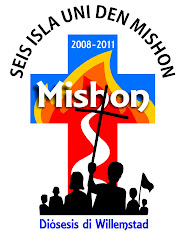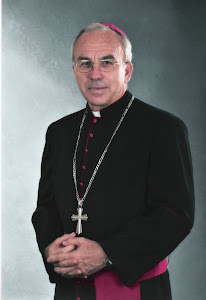By Louie Verrechino
To wit, I would submit that the changes that have taken place in the sacred liturgy since the Council closed find their impetus in but one of two places; either the guiding hand of the Holy Spirit or the deceptions of the Devil. That’s just the milk.
The solid food that relatively few can digest is this – many of the changes foist upon the sacred liturgy over the last 40 years fall into the latter category.
To be very clear, the ever evolving state of the Pilgrim Church, and likewise Her liturgy, is evidenced by a deepened understanding of Divine revelation and an increasing awareness of Sacred Mystery as She and Her members grow in holiness; i.e. Her progression toward heavenly perfection.
When there is evidence, however, that the Church has allowed Herself and Her members in any given age or circumstance to become infected by worldliness, we must be willing to identify it for what it is – a sign of regression.
The former, of course, is the work of the Holy Spirit who leads the Church into all truth along the way of salvation. The latter, quite obviously, is the work of His adversary who even now seeks to deceive men into joining him in destroying all that is good and holy. Of this there can be no doubt.
As Jesus said, “One is either with me or against me” (Mt. 5:30), and with the parameters so set let’s turn our attention toward the state of the sacred liturgy as it currently exists at this point in the ongoing process of reform.
While drawing direct point-by-point comparisons to the Extraordinary Form of the Roman Rite is not my ultimate intention, it is useful to do so in some measure. Consider for instance, this most basic observation:
Even a disinterested observer can see that in simple appearance alone (i.e. as evidenced by the liturgy’s visible signs) the Ordinary Form as it is commonly celebrated bears far greater resemblance to any number of Protestant praise and worship services than its traditional counterpart.
Can anyone sincerely deny that the attention of God’s people has drifted away from Sacred Mystery in the newly configured celebration, away from the sacrificial character of the Mass, and away from the Redemptive work carried out by Christ therein?
This more “Protestantized” form of the liturgy has clearly fallen short (in its outward signs) to communicate the unique presence and operations of Christ in the Catholic liturgy; for who in their right mind would ever consider trading the Holy Sacrifice of the Mass for a community prayer meeting as so many have since the Council closed?
More importantly as it relates to the topic at hand we must ask ourselves to whom shall we attribute the impetus for this phenomenon - the guiding hand of the Spirit or the influence (albeit frequently unknown even to those who comply) of the Enemy? It’s not a difficult choice.
Let’s continue by examining some of the specific changes in the Mass by the light of “Sacrosanctum Concilium;” the supposed blueprint for the reform.
Though the Council neither suggested nor encouraged as much, the altar of Sacrifice has been replaced by a structure that by no mere coincidence resembles a “table” upon which a “meal” is prepared, allowing for the priest to approach as contemporary man now commonly does in the ordinary course of secular life; facing his guests as he invites them to partake in a communal event.
Of course, this is the only arrangement that most Catholics today have ever known, but if we simply shake off the dust of familiarity to view this remarkable liturgical change within the context of the Church’s great liturgical tradition, this is a breathtakingly bold innovation that most people simply accept without question.
Those who crave solid food, however, cannot help but wonder how, given the Council’s utter and complete silence on the subject, such a drastic change ever came to be? To rephrase the question in accordance with the current exercise; if the “reformers” who pushed forward this innovation were not following the voice of the Council, whose voice were they following? Stated yet another way, who were they serving?
In most places where the Ordinary Form is celebrated, another stunning change without conciliar foundation can be witnessed as laymen and women (in numbers far exceeding priests) hand out Jesus in the Blessed Sacrament to other laity who come forward to take Him in their hands to place in their mouths like common food.
Further observation reveals how often, thanks to these innovations, the Blessed Sacrament is approached in the most ordinary, casual and even sacrilegious of ways!
Only the willfully deluded, it seems, can deny the degree to which the Real Presence is routinely profaned in the process, most often in subtle ways such as the brushing of one’s hands free of “crumbs” after consuming, taking the Lord in hands that are unwashed, or by approaching the Lord in so nonchalant a manner that it would invite ridicule if one were to so enter the chamber of a judge at the local courthouse.
That said more ghastly offenses do indeed take place; like people of ill intent walking out of the church building with the Eucharist in their pocket, the Sacred Host being accidentally dropped or left in the pew, etc.
Add to this the fact that our current practice (which is carried out only by indult) has produced a class of “ministers” both ordinary and otherwise who are visibly uncomfortable (and in my own personal experience even hostile) toward the venerable and normative practice of dispensing and receiving Holy Communion on the tongue.
Acknowledging this situation for what it plainly is renders all appeals to antiquity as an excuse for continuing this abomination (the favored argument of progressives) utterly hollow.
Don’t be afraid to ask the simple question: Can anyone really be so naïve as to believe for even a fleeting moment that Satan does not delight in witnessing what has taken place with respect to our treatment of the Blessed Sacrament?
One cannot help but conclude that the Devil, who has already convinced many (clergy included) that he himself does not even exist, now in no small measure thanks to the changes that most just mindlessly accept in the way Holy Communion is given and received, is also making remarkable inroads in his attempt to lure foolish men into denying that the Lord is truly present in the Most Holy Eucharist!
En route to promoting that outright denial, Satan has successfully tempted men to practice idolatry-of-self specifically during the Rite of Holy Communion!
Information offered by the Federation of Diocesan Liturgical Commissions, which is relied upon as a resource by many dioceses, illustrates the problem very well.
The Last Supper was a ritual meal following the customs of the time. Communion in the hand was the universal practice then... Communion in the hand can deepen our faith in the dignity of every Christian as a member of the body of Christ, including our own personal dignity.
Setting aside the glaring error of omission in categorizing the institution of the Eucharist as a “ritual meal” apart from its sacrificial nature, note that this attention to “personal dignity” comes at the expense of recognizing the Divinity uniquely made present. This irresponsible treatment has, not surprisingly, been extrapolated to validate the rather ordinary use of “extraordinary” ministers as evidenced in the liturgical guidelines published by one U.S. diocese, for example:
This ministry (Extraordinary Minister of Holy Communion) is more than one of convenience; affirming the dignity and holiness of all the baptized, the extraordinary minister of Holy Communion is a sign that all are called to share the life and sustenance of Christ with each other.
It is noteworthy that where the Council speaks of Sacrifice, the contemporary liturgist stresses “ritual meal,” where the Council focuses on the unique presence of Christ in the most Holy Eucharist, the progressive seeks a venue for calling attention to the dignity of man, where the Council Fathers highlight the unique role of the priest who acts in persona Christi, “extraordinary ministry” is stressed as a tool for diluting distinctions; where the Council promotes a liturgy that turns the hearts and minds of men toward God, the modern day liturgist seeks to draw man’s attention toward his own personal holiness.
Yet another common example of man’s self-focus in the liturgy lies in the fact that sacred music as Holy Mother Church has defined it throughout the centuries – including at Vatican Council II - has all but disappeared in most places. Enter into a conversation on this topic with those whose faith can only handle milk and the conversation very quickly devolves into a debate about personal taste.
We could go on, but at this let’s consider the Lord’s own words, “So, every sound tree bears good fruit, but the bad tree bears evil fruit. A sound tree cannot bear evil fruit, nor can a bad tree bear good fruit. Every tree that does not bear good fruit is cut down and thrown into the fire” (Mt. 7:17-19).
Make no mistake about it; Holy Mass is a work of the Lord. It is, in a sense, our fore-entrance into Eden restored. It is here where we are granted access to the Tree of Life in the form of the Cross and its most precious fruit, the Most Holy Eucharist, wherever it is validly celebrated.
We must not, however, allow this manifestation of God’s mercy to pacify us into ignoring the plain truth that human beings are still being seduced by the Evil One in this new garden as well. The Master Deceiver is constantly, and with some obvious success, enticing man to eat the bad fruit of the bad trees that we ourselves, if not at his urging his utter delight, planted in the liturgy with our very own hands.
Why is it so important for us to acknowledge this and to patiently yet diligently share it with others?
It is high time for the axe to be taken to our bad liturgical trees, but God help the faithful pastor who is determined to do just that! Nothing guarantees howls of protest and letters to the bishop like tinkering with the “me-centered” goodies that have infiltrated the Mass!
Knowing this, many a good shepherd is reluctant to do what is necessary lest the sheep turn into ravenous wolves. We need to pray for our pastors’ courage, yes, but we also need to take responsibility and have their backs.
After four-plus decades of liturgical madness otherwise misnamed as “reform,” there’s not a one of us who can still legitimately claim recourse to the innocence and ignorance of children in the matter.
The bad liturgical trees have matured, their rotten fruit are now plainly known, and the heady post-conciliar days of milk are over. It’s time for solid food.












